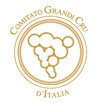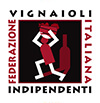Chianti, I Balzini Winery and a soil made for wine
A soil’s nature, together with an apt climate, influence a region’s suitability for fine wine production. Chianti Classico’s region and its neighbouring areas have great heterogeneity of turf, which influences the growth and development of vines, of grapes, and consequently of wines.
Soil types range from sediments of sea and lake origin, to metamorphic rock: alberese (marl), Galestro (friable clay schist), sandstone, sea and lake clay, and river conglomerates.
The soil influences the sugary levels of the wine, as well as acidity, the weight of grapes, the amount of grapes produced per plant, and maturation. For high-quality red wines, vines benefit from soils that limit vigour and reduce the plant’s foliage. Water availability needs to be constant but not excessive.
At I Balzini Winery, in the Chianti region, where thermal excursions are significant, soils are sandy with sediments of sea origin, they are deep, never too fertile, and rich in water. Vines have balanced and regular access to water, even in the harshest years and can thus grow steadily towards grape maturity.
Adding to this, manual labour, pruning, foliage and grape upkeep, and careful check of plants’ health yields to elegant, soft, scented and luscious wines.



